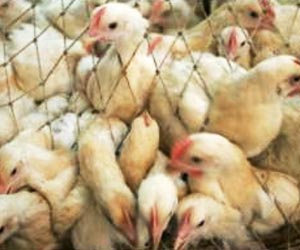
‘The first case of human infection with avian influenza A (H7N4) in the world was reported in China. The infection has been transmitted from ducks and possibly chickens.’
Tweet it Now
The woman caught the virus from a live chicken, but there are no signs she spread it to anyone else.
About Influenza Influenza comes in three basic types: A, B, and C. The second two — influenza B and influenza C don't cause big problems. The trouble-makers are the influenza A strains. Among other things, influenza A viruses prefer hemagglutinin and neuraminidase. Hemagglutinin (H) and neuraminidase (N) are little protein spikes on the flu's surface that help it invade cells. There are 16 versions of hemagluttinin and nine for neuremanidase.
There are 144 different subtypes of influenza A: from H1N1 to H9N16. All of them exist in wild birds around the world, so they are all bird flu. But every now and then, one evolves the ability to infect other animals.
H1N1 is one of the more promiscuous. It can infect birds, people, pigs, and horses. H2N2, on the other hand, only makes its way into people and birds.
Why Are There so Many Types of Bird Flu?
Advertisement
That's what happened in 1957 during the Asian flu pandemic, says computational biologist Richard Goldstein, from the National Institute for Medical Research in London. Since H2N2 had never infected people before, our immune systems had never seen these accessories and thus, we had little defense against it. The new strain ended up killing roughly 70,000 Americans.
Advertisement
Source-Medindia






